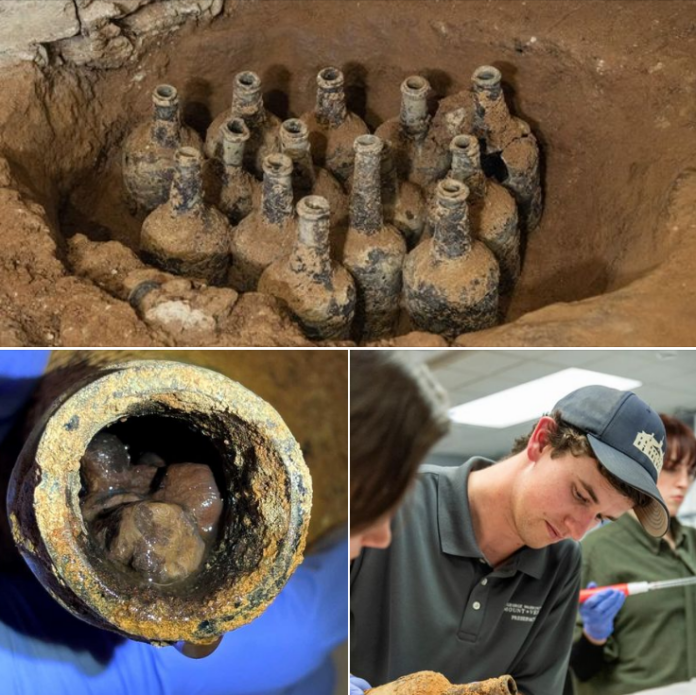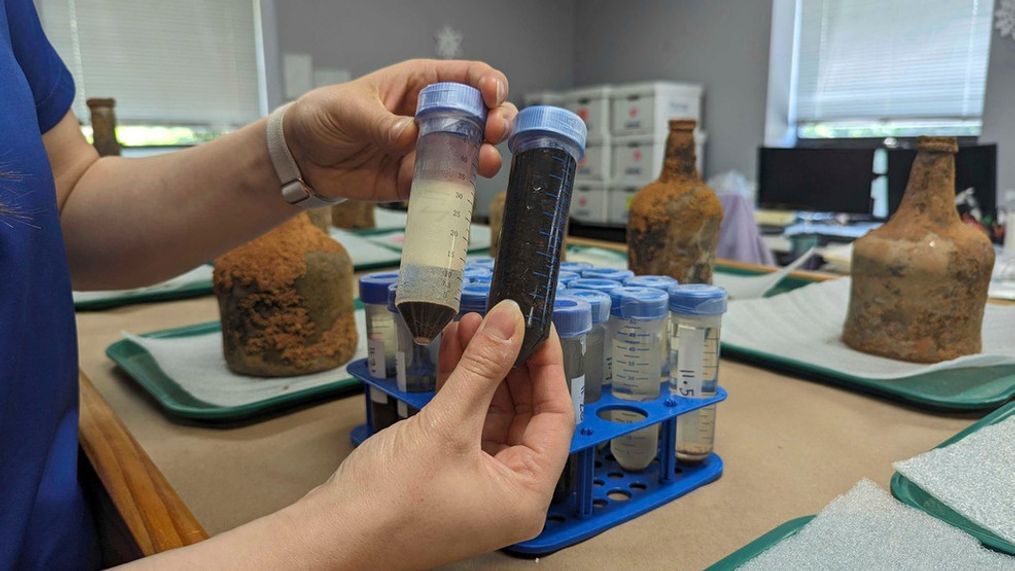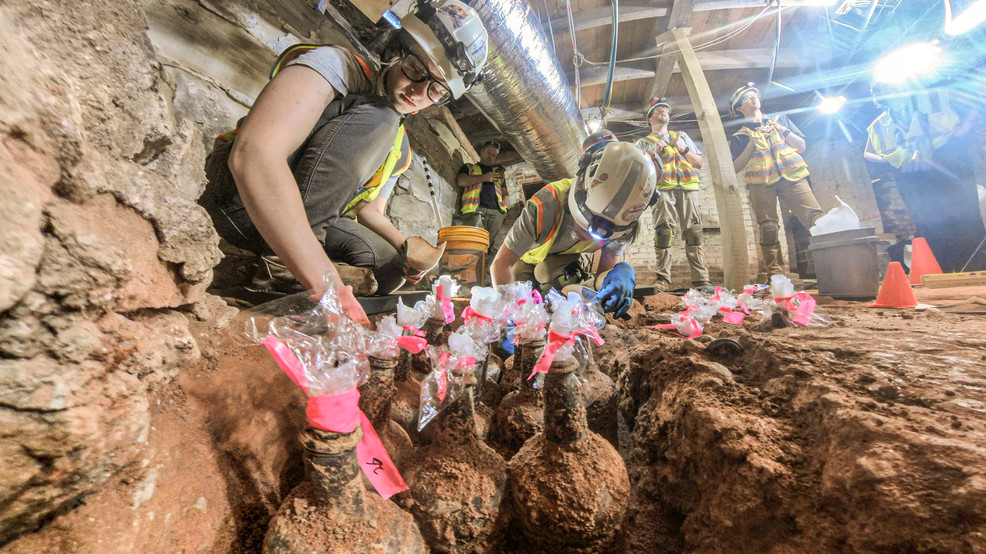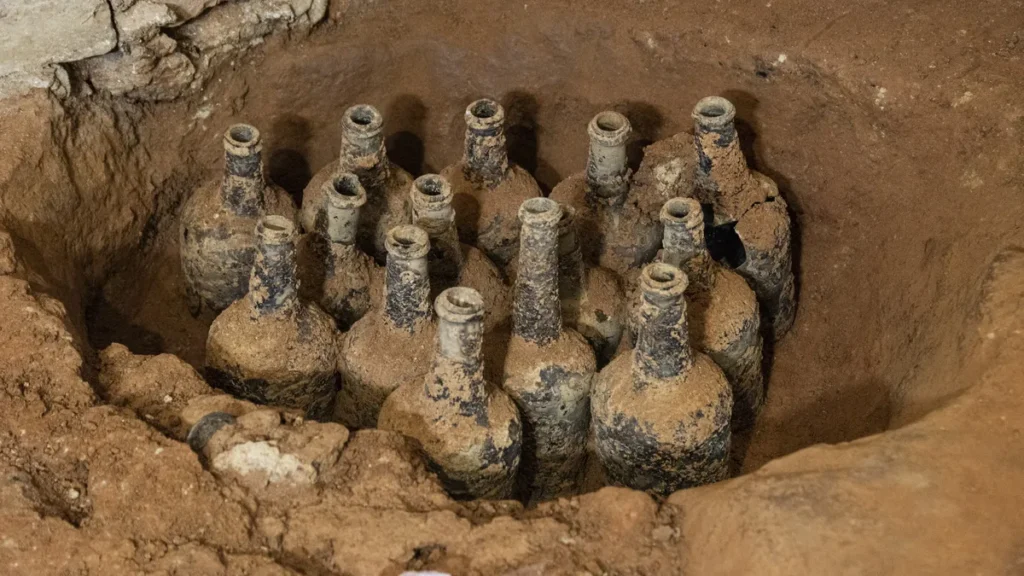The walls of Mount Vernon, the historic home of American Founding Father George Washington, have long concealed the mysteries of history. However, recent excavations beneath its floorboards have led to an astonishing discovery: nearly 30 glass bottles containing “perfectly preserved” cherries and berries. This incredible find provides a rare window into 18th-century life and the meticulous preservation methods used during that era.
Unearthing the Past

In May of this year, archaeologists involved in the Mansion Revitalization Project—an effort dedicated to preserving this historic site—made an intriguing discovery in the mansion’s cellar. They uncovered two intact 18th-century bottles filled with liquid, cherries, and pits. This initial discovery was merely the beginning. The team has subsequently found an additional 35 glass bottles in the cellar’s storage pits, with 29 remaining intact and still containing preserved fruit. The delicate task of carefully extracting these fragile artifacts was slow but essential to ensure their conservation.
Historical Significance

“These artifacts likely haven’t been exposed to light since before the American Revolution, perhaps forgotten when George Washington left Mount Vernon to lead the Continental Army,” stated Doug Bradburn, President and CEO of Mount Vernon. The fragile nature of these bottles necessitated careful excavation and handling. To further analyze the contents, the Mount Vernon team has collaborated with the United States Department of Agriculture’s Agricultural Research Service.
Scientific Analysis
Although the investigation is still in its early phases, the team has already identified 54 cherry pits, 23 stems, and some cherry pulp, likely sourced from a more acidic variety of fruit that aided in their preservation. Additionally, berries thought to be gooseberries or currants have been observed. DNA testing is anticipated to determine the specific species of cherries, with hopes that the pits may one day be cultivated to revive this ancient fruit. However, this task presents significant challenges. As molecular biologist Victoria Meakem from the Plant Genetic Resources Unit mentioned to The Washington Post: “We broke open a few pits, and they were waterlogged, which diminishes their germination potential. But it’s something we’ve considered.”

Preservation Techniques
Microscopic examination has provided fascinating insights into how the cherries were harvested—by carefully snipping them from the trees with shears, intentionally leaving the stems intact. This suggests a thoughtful and deliberate preparation process. “These perfectly preserved fruits, picked and prepared over 250 years ago, offer an exceptionally rare chance to enhance our understanding of 18th-century environments, plantation foodways, and the roots of American cuisine,” remarked Jason Boroughs, Principal Archaeologist at Mount Vernon.
A Testament to Skill

The bottles and their contents also underscore the expertise and knowledge of the enslaved individuals responsible for the careful food preparations at Mount Vernon. Boroughs added: “The bottles and their contents are a tribute to the skills and knowledge of the enslaved people who managed food preparation from tree to table, including Doll, the cook brought to Mount Vernon by Martha Washington in 1759, who oversaw the estate’s kitchen.” Regrettably, not everyone at Mount Vernon had access to this preserved cuisine; it was likely a privilege reserved for the estate’s owners.
Conclusion
The discovery of these “perfectly preserved” fruits provides a unique and captivating look into the past. It illuminates not only 18th-century preservation techniques but also pays tribute to the expertise of the enslaved individuals who played vital roles in daily life at Mount Vernon. As research continues, these artifacts hold great potential to enrich our understanding of early American history and the foundations of American cuisine.

